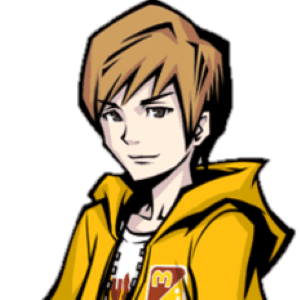Back at it again with another Trails double feature? You know it! It truly does surprise me how motivated I became to turn that casual summer review into a long-term project to cover an entire series, but the experience thus far has been so rewarding through all of its ups and downs. So for today as recompense for leaping headlong into the series smack in the middle of its story, it’s about time I gave the series’ beginnings their proper due. In order to go forward, we gotta go back, and what I found over these 70 hours was definitely not what I expected!
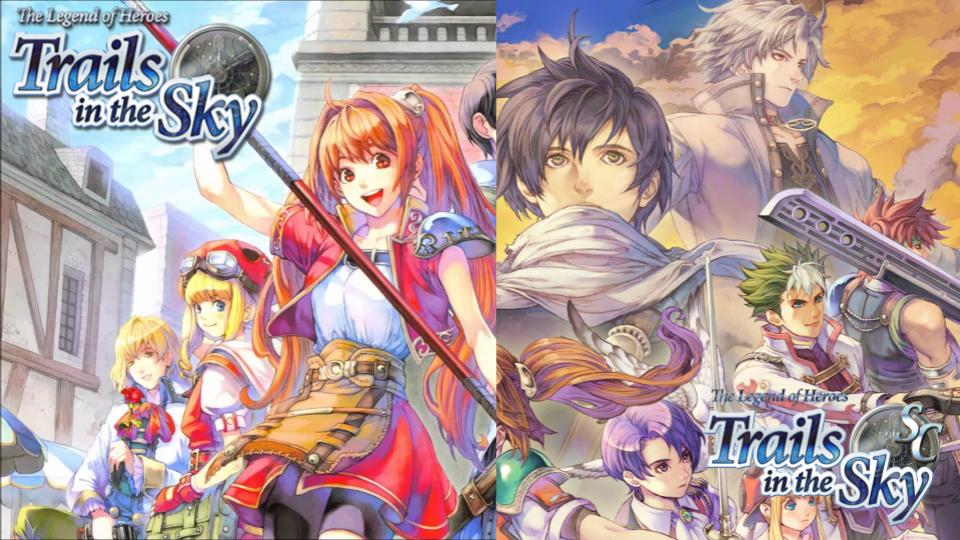
Developed by Nihon Falcom, published by Xseed Games, and released worldwide in 2011 and 2015, The Legend of Heroes: Trails in the Sky First Chapter and Second Chapter are Japanese role playing games released for Playstation Portable and PC via Steam. Their premise involves sibling protagonists embarking on a journey across their homeland to grow in their role as its protectors by solving a variety of problems that eventually coalesce into a plot far beyond their imagination. Players interact with the games through world exploration, turn-based combat, and a ton of reading. Note that I used the Steam version of the games, which is basically the standard way to play it in this day and age. Seeing as I have returned to the beginning of the series there is little reason for me to fret over their entry numbers, but it is worth saying that I did play all of the Cold Steel games before these ones in case anybody is unaware.
Trails in the Sky
The tale of Trails in the Sky takes place in the Kingdom of Liberl, about two years before the events of Cold Steel I, and centers on Estelle Bright. Estelle is the daughter of a renowned bracer, a member of the international Bracers Guild which operates all over the Zemurian continent protecting civilians provided they remain neutral in matters of the state. The game opens with Estelle and her brother Joshua Bright, adopted under mysterious circumstances a few years earlier, becoming junior bracers and starting work in their hometown. Shortly after though their father goes missing, and the two embark across Liberl to find their dad while proving themselves worthy of becoming fully-fledged bracers. In terms of overall plot, Trails in the Sky is rather slow even compared to Cold Steel I, with most of its particularly exciting moments saved for the last 10 hours of the game. This isn’t to say that nothing is being done with the game’s runtime, though what it does do is accomplished with mixed results.
To start with the positives, the game continues Trails tradition of constructing its world and concepts in loving detail. As the first game set in the world of Zemuria though, the overall world building is split between showcasing the Liberlian Kingdom and people, and the rules and impact of Orbal technology, the magical technology which revolutionized the continent half a century ago. As someone who became accustomed to the presence of orbal technology in the other games I can’t say I found much of what was said about it terribly engaging, but overall it did a good job at presenting it in a comprehensive way that mattered both as an introduction as the series’ intended starting point and as necessary to the greater themes of these two games. Unfortunately this dedication to Orbal power leaves the kingdom of Liberl itself with a reduced amount of time to be detailed. It’s certainly not without its important background history and locations, but the people of Liberl have a rather standard “JRPG good guy kingdom” culture about themselves. Perhaps one of the best of its kind, but very standard nonetheless. Overall I feel the worldbuilding of Trails in the Sky would have impressed me more without having experienced Erebonia first, but for what it is I can appreciate the efforts.
The other major use of the game’s runtime is the development of its main characters, however this is where things fall into a pretty rough spot. This first major issue lies in the cast of supporting main characters, and the fact that they get a very limited amount of screentime. While I like the approach of not having the characters stick around superfluously, in practice this winds up giving most of the supporting characters only enough time to display surface level traits and don’t particularly detail much of their backgrounds or grow beyond their initial state. This means that the main cast consists almost exclusively of characters you either like or dislike depending on their basic personalities, which are really harsh first impressions for a cast meant to be experienced over two games. For every Kloe Rinz who endeared me with a pleasant and well-to-do personality, there was a Scherazard Harvey who boiled down to some rather unadmirable habits. As for the main leads who remain with the player consistently throughout the games, Joshua is left largely ambiguous to play up his mystery, and Estelle’s main character development revolves around her… *sigh*… falling in love with Joshua.
To be as charitable as I can be with the writers of this game, what I want to believe happened was that Trails in the Sky was always meant to be a story of young romance, but for certain story reasons Joshua pretty much had to be an adopted member of the Bright household. But instead of picking one or the other and either changing the story’s emotional center to a sibling philia or finding another relation to the Brights that could realistically work, the writers simply decided… to not choose. At the end of the day, no amount of justification both in or out of the story excuses the fact that the relationship in the center of the game is deeply perverse. I kid you not, the NPCs of Estelle’s hometown of Rolent even tell her to her face that they’re surprised the two haven’t yet entered a relationship at the start of the game, almost as if the writers know their relationship is wrong and are priming the player to accept it through creating a specific social atmosphere. At least Cold Steel IV had the decency to make its forbidden romance options, well, optional. This was easily my least favorite game in the series story-wise so far, and a perfect example of how intemperance in the writing room can bring a game down so significantly.
Before I leave off on the story though, I should give this game, and Trails in the Sky SC too, some credit for both the main script and the NPC dialogue, because these have to be some of the best crafted conversations I’ve seen in a video game. More often than not, the exchanges and remarks of Liberl’s inhabitants are sharp with wit and a blast to read. Perhaps the most famous example of this is the treasure chests, because every single opened chest in both Sky and Sky SC can be re-interacted with again to get a notification, but instead of just saying “this chest is already opened” they convey that message through a huge variety of jokes, puns, fourth-wall breaks, references, and everything in between. It is easy to see why diehard Trails fans were conditioned to scour the games for every last scrap of dialogue in at least one of their playthroughs with Sky, and this is by far the best part of this duo of games. So in summary, the game’s story is another slow-burner with good worldbuilding and a great script, but man, that character writing is really, REALLY unfortunate to say the least.
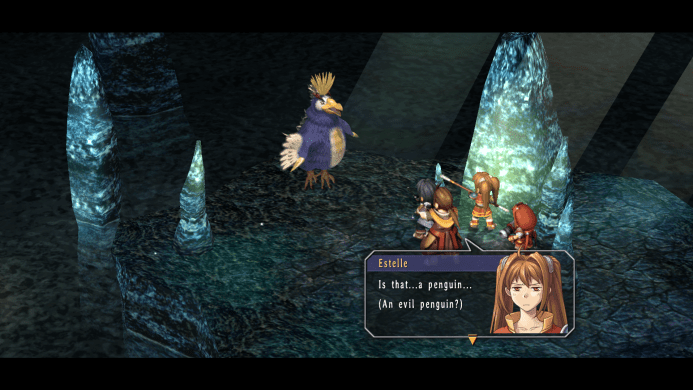
The basic gameplay loop of Trails in the Sky is fairly standard as far as JRPGs go. The combat system was for me an exploration of the series’ roots, and it was interesting to see the foundations upon which the bombast of later systems were built. The main thing that stuck out to me was that battles took place on a grid-based field, meaning everything from movement to attack aiming was no longer accomplished through feeling it out in a 3D space but rather had much more clearly communicated effective ranges. The knock-on effects of this has both its upsides and downsides, as while it does make information more clear in general and easy to digest, there’s also a certain limitation in not being able to meticulously adjust the aim of your attacks in order to hit as many enemies as possible that I kind of dislike. Line-based Arts and Crafts especially went from some of the most versatile and powerful abilities in my arsenal to the most demandingly precise abilities of all, often not particularly worth the effort.
What really sets Trails in the Sky apart from the other games though is the difficulty, because the way party composition is handled makes the game extremely limiting. The rotating party members are in fact a narratively satisfying design choice in theory, but the issue arises when you realize the game has no reserve bench outside of the final dungeon: your four combat slots are in fact your four party slots. You actually spend most of the game’s run time with a party of three, sometimes getting as low as two, and this has a side effect of making the combat feel much harder than it actually is. While enemies in this game aren’t usually too terribly powerful, it is the first game in the series after all, there’s an old concept in turn-based design known as action economy, which dictates that a numbers advantage is very significant because the more actions a given team is able to take the more they are able to accomplish and the more pressure they can apply on the enemy. Sky winds up withholding party members to the effect of making the player consistently less versatile than they otherwise could be, and it’s frustrating because the game’s combat really is at its best when you’re coordinating the moves of a full team of four to pull off satisfying combinations. The final chapter of the game, even before the last dungeon, is the best chapter of the game in this regard since it most consistently provides access to a team of four, but that never served as a fix for me so much as it just made most of the combat before then feel much worse. Overall the combat systems of Sky were a good starting point for the series, but I can’t help feeling that the game holds back its best aspects for far too long.
As far as character customization goes, I was surprised to find that the quartz system actually began life as a much more complex beast than anything in the modern titles. All quartz share two things in common: they provide stat boosts and/or passive effects, and they have an elemental point value associated with them. These elemental points add up to determine which Arts characters are allowed to cast in battles, and they are added up depending on which line of a character’s orbment the quartz is placed on, so longer lines allow you to more easily create quartz combinations that give the Arts you want. In essence, characters can be built either with the raw stats of the quartz in mind to augment a more physical-based game plan as with Zin’s many-lined orbment, or their quartz can be curated in order to use specific high-tier Arts as with Olivier’s single line orbment. The balance of these two systems gives the customization a huge level of nuance which encourages getting intimate with the particulars of its systems, and while daunting at first there is something rather charming about its design compared to the later entries. Really my only complaint about this system is that it necessitates grinding in a game that otherwise really doesn’t ask you to, because unlocking new slots in your orbments costs a large number of sepith crystals, but unlike Cold Steel where the crystals are abundant, enemies in Sky drop them in limited quantities and each enemy type drops specific elements of sepith. Running around to beat up the one enemy in the zone over and over just to get those bizarrely limited wind sepith wasn’t my idea of a good time.
As for the exploration side of things, Trails in the Sky’s design is fundamentally still the same as the other games. You go to a new location for each chapter, complete various quests and side quests to increase your rank for rewards and advance the story, buy up some items to stay prepared, beat a boss, then move on until the end of the game. Side quests don’t typically get any harder than your basic fetch and slay quests, but they do grant opportunities to read more of the game’s dialogue so I was happy to pursue as many as I could. Liberl being a small kingdom meant that pretty much the whole game is trekked on foot, but this lack of fast travel makes sense for both the player and the characters in the narrative to get familiar with the lands they’re traveling across. There aren’t any relationship building mechanics here like in later games, but admittedly I found that I didn’t miss them too much since it kept the game moving forward at a brisker pace. I like the bonding events, but I can admit that they bog down the speed of the exploration sections just a little.
Finally for this half I will cover the presentation and music for both Sky and Sky SC since they are once again very similar in this regard. Having been built originally for the Playstation Portable, the graphics were never going to stand up to even console games of its time, but on the whole I found a mixture of things I liked and disliked about it. The artstyle primarily features an isometric view of the game, with characters and monsters appearing as sprites in an overworld populated by simple three-dimensional objects. There’s actually a lot more detail in the environments than one might expect, and the spritework manages to offer the characters a certain visual appeal that lasts beyond its time, though certainly not the most complex spiritework ever. On the other hand though, I can’t help feeling that the isometric perspective limits the amount of detail you can really appreciate in the game’s presentation. While I understand the choice was likely done for the sake of the combat system, there were actually small moments where the game played with this perspective like with the stage play that only made me wish we could have had a more intimate camera for exploration while keeping the isometric camera for combat. It also doesn’t help that the environments themselves are rather samey throughout the kingdom, as many of the games major roads and cities can be boiled down to “lush forest trails” and “marble white buildings” respectively. There are obviously some exceptions to this, but for the most part I felt the environments were just less fun to explore when there wasn’t as much new scenery to entice said exploration. Sky and Sky SC certainly aren’t bad looking games by any means, but I feel like the art direction could have been pushed a little further than it was.
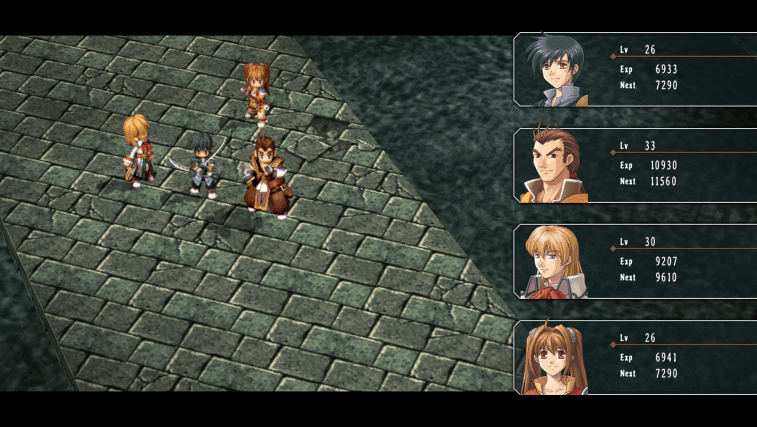
The music in these games make an impressive showing, further cementing Falcom’s status as top-tier in the sound department. The soundtrack faces similar low-budget limitations to the visuals, but even despite some of the more synthetic crutches the results are delightful. While town and environment themes weren’t always to the level of Cold Steel’s quadrilogy, they certainly didn’t lack for a few notably great pieces of music and generally got better in the second game. The battle tracks however deserve some serious praise, because they really have to be heard to be appreciated. It has been a very long time since I played a video game that compelled me to bust a move whenever I entered combat, but the upbeat and infectious jazzy rhythms that set the stage of the monster mashes never got old no matter how many times they came on, and the more serious battle songs hit hard in their own right.
So in summary, Trails in the Sky was actually a rather disappointing opening act of this first arc of the series. While there were elements of an enjoyable game over the course of my time with it, the frustratingly limited dynamics of combat due to party size made the gameplay much less fun until the end of the game, and its main story chooses to spend far to much of its time teasing out an inappropriate relationship, even whilst it’s admittedly doing important narrative legwork for the sequel in other areas. I think ultimately that point about preparing for the sequel really is the lynchpin here, because while it’s ok to make stories intended for multiple volumes, Sky ultimately just feels like a bunch of setup that leaves its own story and gameplay underdeveloped in the process. Thankfully though, the next chapter of this tale would really start to play for keeps…
Trails in the Sky SC
The second part of Estelle Bright’s journey picks up immediately after the end of the first game, with Joshua no longer by her side due to certain circumstances. Resolving to find her brother and face a new threat looming over the Kingdom of Liberl, Estelle travels to the state of Leman to train alongside some of her colleagues, then afterwards returns to begin a new journey across her homeland. Pretty much immediately after the prologue, Trails in the Sky SC begins to fix many of the issues of its predecessor. Interesting events are happening with greater frequency and the story encourages you along with fresh scenarios without ever getting too exhausting. The character development of the main cast is also given the space it needs for the heroes to really come into their own as well. While ultimately I felt that characters who started on the wrong foot generally remained in the lower end of my opinions, the cast as a whole was made much more clear, understandable, and likable by the end of the journey. Separating Estelle from Joshua especially gave her the space she needed to grow beyond her status as a bumbling shonen protagonist whose only real interest is in her illicit feelings, to a much more rounded and well-realized person.
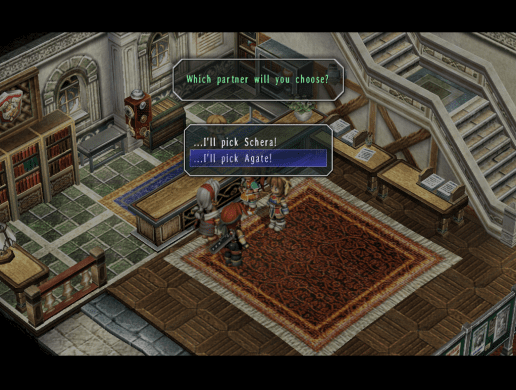
Just in general the story of Sky SC is more complete, interesting, and even thought provoking. Really the only complaint I can leverage about it is that at the end of the day while Estelle is allowed to grow quite significantly as a character, it doesn’t change the fact that one of her primary motivations is to enter into a relationship with her adopted brother. It is especially frustrating because there are many moments of resolution and dialogue that would have worked really well if it were just born of selfless sibling bonds, but unfortunately they cannot be understood as such. I do also have some complaints about one antagonist in particular who I strongly disliked because it repeated the problem Altina Orion had of being afforded way too much sympathy just because she is a cute little anime girl, but at the very least I can see where this particular game is coming from more than the absolute nonsense that was Altina so I won’t rail on it too much. At the end of the day, the best way I can describe Sky SC’s story is like a pile of really delicious fresh apples with one extremely repugnant one snuck into the pile. If only they would have removed the rotten apple from the pile it would have been the Platonic Form of apple piles, but as is you really just have to pinch your nose and try to appreciate the good apples as best you can, and to be fair those other apples look pretty tasty.
The mechanics of the game’s combat from an explicit level barely changed at all from the first Sky game. The only really new feature added was Chain Crafts, a Craft that lets you attack with multiple party members at the same time, which really is a non-effect on the game as Arts damage is king unless the character in question has an all-in physical build, and using a Chain Craft not only expands Craft Points from all participating teammates but also delays their turns, making the mechanic immensely impractical. The more implicit inclusion of a large reserve of characters you can swap between at the Bracer Guild however finally opens up the game’s true fun very early into the adventure, and allows you to play with the vast variety of Trails party building quickly. The ability to play with four party members at basically all times alone made the combat in this game so much more fun, and really helped me to understand some of the great things about these two games’ combat design.
I do have some complaints about the game’s difficulty, mainly that plenty of bosses in the final three chapters of the game feel less like they’re hard because of interesting design and more because in order to beat them you are basically required to go into the fight, learn what status effects they inflict, die, then reload and go back in once you’ve equipped the necessary immunity accessories (not that this was never the case in the other games, but it feels more salient here). There’s also one boss at the end of the game which is the hardest by a country mile and is supposed to be skippable, but the Steam version’s “Continue” button is bugged to total non-function, so the average player will either have to die and hit “Retry” until the difficulty adjusts itself low enough for you to win or you literally have to grind to an appropriate level and fully master the game’s mechanics to win, neither of which is ideal for a mandatory fight. Even despite these issues though, the combat is a massive improvement.
Character customization is also much improved from the previous iteration. Previous direct sequels changed the obment upgrade system from a slot unlock format to a slot upgrade system, and this one is no different. This system contributes greatly to Sky SC’s game feel because unlike the first game where being unable to upgrade your orbment to an appropriate level meant being severely crippled, here the game allows you to still construct a full build, albeit one made up of somewhat weaker quartz. The reduced scarcity of sepith, or at least what felt like it to me anyways, helped a lot with this as well. Sure most of my builds wound up amounting to “send the frontliners to tank while the backline does a mixture of healing and hitting the enemy with Dark Matter till they die,” but the game still provided enough flexibility to let me experiment to a degree the first game never did.
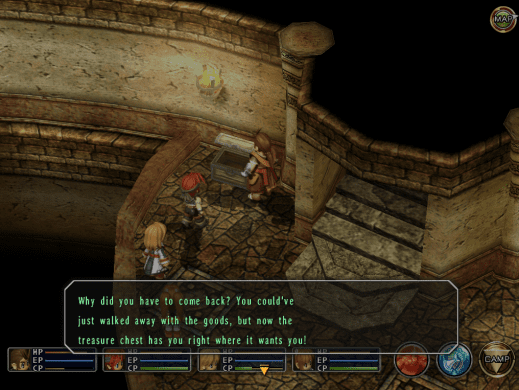
As for the exploration side of things, my feelings about it are… weird to say the least. On one hand, it actually has more area repetition than both Cold Steel II and Cold Steel IV considering it has no new towns and I’ve already established that aesthetically Liberl is very homogeneous. Despite this though I find myself with more positive emotions about it than Cold Steel II, and while it’s possible that since that review my expectations about what world design should be in Trails sequels have simply lowered, I think it probably more boils down to the fact that they take the opportunity to mix up the zone order. Cold Steel II makes a rather fatal mistake in beginning the bulk of its exploration in Celdic and makes the experience too derivative of the preceding game, and while Cold Steel IV does it best of all three thanks to having more significant new areas, even it begins in the Sutherland Province again. Trails in the Sky SC by comparison drops the player into Ruan from the middle of the previous adventure, and takes you through Liberlian territory in a totally new order. It probably also helps that Ruan itself has story elements most directly tied to Estelles previous actions, and that made it a great hook for the second installment. Between each chapter instead of walking to each city the party travels by airship, and this new feature is in fact not a form of fast travel but rather short sections of dialogue that lets the characters have some interactions between major story beats. This new pacing did a lot to smooth out the adventure and does much of the legwork in terms of fleshing out the characters. By far the best implementation of airships so far. Beyond these, exploration is pretty much the same.
Wisdom and Conclusion
As what what we can learn from Trails in the Sky and SC, you would think a story with such a terrible emotional core as ‘forbidden sibling romance’ would have nothing of value to say, but in areas other than that garbage there is actually some really incredibly good stuff in here that arguably makes them the pair of games with the most to say about our lives and times out of all the Trails sagas that I’ve played so far. What these games explore more than anything is the dangers of overreliance in its various forms. The more overt manifestation of this in the story comes from orbal technology itself and the ways in which Liberl’s widespread utilization of it leaves it vulnerable in some ways, but there are other examples within the game’s subtext. Sky SC is rather happy to do the whole “power of human bonds” spiel in its final climax, but what the game doesn’t say out loud or perhaps even realize is that said bonds are powerful because the characters have a balance of interdependence and independence. As I mentioned earlier, Joshua’s disappearance in Sky SC is the catalyst for Estelle’s change as a character because she was forced to reckon with her overreliance on his competence as both a bracer and person, and grew as a result of accepting that fact. Other characters in the story similarly have arcs about how their idolization of or fixation on certain people holds them back, and are able to become better by acknowledging that they have to steer their own lives forward at some point.
As Catholics we kind of get to cheat a little in this regard because there is literally no downsides to depending on God, who in His Perfection is incapable of letting us down, but even He wants us to take active roles in our lives, and with God as an exception this world is full of things we can be tempted to over rely on. Our fellow men are neither immortal nor infallible and can fail us when we least expect it, our dependence on technology can make us helpless when were not in possession of it, and losing oneself in a coping mechanism can cause us to kick our problems down the road, if not exacerbate the issue and drive us to greater distress, among many other things. Let tales like the one of Liberl’s heroes remind us that only one Power in this world is absolute, and that accomplishing our duties will require us to learn how to balance our interdependent nature with our need to be personally competent, both for our own sakes and for the sake of others. With The Lord as our Help we have nothing to fear, but let us be good stewards of the strength He provides.
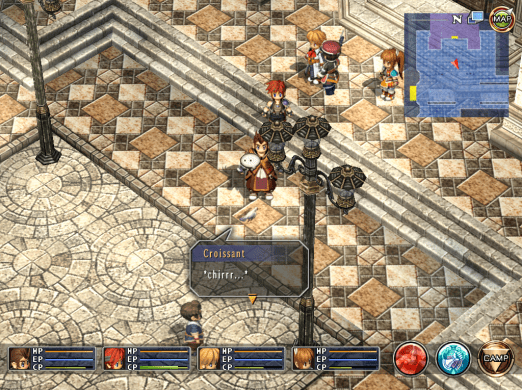
In conclusion, Trails in the Sky First Chapter and Second Chapter are easily the most confounding pair of games I’ve ever attempted to give a recommendation on. First Chapter is easily the weakest entry in the series I’ve played to date, with gameplay that intentionally holds back its own fun and a narrative with such a poor handling of its characters that the following game is hurt by the foundation it lays. Second Chapter comparatively is one of the best entries in the series, with gameplay filled with tons of engaging decision making and an impressive story with powerful thematic resonance that actually redeems certain aspects of the foundation First Chapter laid. The best advice I can give regarding this matter is to ask yourself 2.5 simple questions. First, are you mature enough to recognize that in reality Estelle and Joshua’s relationship is morally unacceptable, and are you comfortable putting up with that content? Second, are you willing to spend 30 hours playing through a pretty poor game in order to get to 40 hours of a much, much better one? If you are able to say yes to both of these questions, the Trails in the Sky games tend to go really cheap during Steam sales so it really is a good starting point for the series in terms of both chronological order and accessibility. For me though, I should probably count myself lucky that I started with Trails of Cold Steel, because if this were my starting point I probably would have written the series off in the opening hours of First Chapter. The journey was mostly worth it in the end, but wow that was a turbulent flight.
Scoring: 68%
Gameplay: 3/5
Story: 3/5
Art and Graphics: 3/5
Music: 5/5
Replayability: 3/5
Morality/Parental Warnings
The Legend of Heroes: Trails in the Sky First Chapter and Second Chapter bear a number of supernatural elements. The orbal Arts that the characters use are basically magic, though it is given a somewhat technological spin. The orbal Arts associated with time-element quartz tend to describe themselves as tapping into the power of “Gehenna” though, with the Death Scream ability in particular showing a demon popping up to attack enemies. The story also features a fictional religion called the Septian Church that worships Adios the sky goddess, but they are clearly inspired by Christianity to an extent so it’s not particularly uncomfortable. Monster designs vary wildly from harmless-looking to lovecraftian, though they are mostly garden variety RPG beasties. Combat involves a variety of spells and weapons, but blood is almost wholly absent save a few specific animations. A certain dream sequence has some fairly frightening scenes with a character’s body falling to pieces, though the chibi-esque sprites lessen the overall horror. Despite many attempts at justification, the romantic relationship at the heart of the story is incestuous, but you already knew that from reading the article. There is some light dialogue which expresses subjectivist ideas about truth. The number of sexualised character designs are pretty small, probably to some degree a result of the limited camerawork, but when the game does go for sex appeal it goes pretty hard. Scherazard wears a very revealing outfit, and her S-Craft has her sprite walk towards the camera while it is pointed squarely at her chest. The worst the game gets in this regard is with a certain villain introduced in chapter four of the second game.
A number of the characters regularly engage in rather unbecoming behavior. Scherazard, outfit aside, drinks herself willingly to inebriation, dabbles in tarot fortune telling, and interrogates downed enemies in a rather sadistic ‘femme fatale’ fashion. Olivier Lenheim is a debaucherous aesthete who flirts with literally anybody who stirs his passion for beauty regardless of their sex, most notably Joshua who is also a minor. Father Kevin Graham also speaks to Estelle in innuendo at times, though by comparison he is just joking. Joshua is pressured into crossdressing twice during the first game, with every onlooker completely disregarding his objections. Agate Crosner regularly makes use of foul language, and other characters use it on occasion too. The worst in this regard is one NPC in Ruan who uses a pseudo-censored version of the f-word.
If you enjoyed today’s article or any other work by Catholic Game Reviews, consider donating to us on Patreon. Aside from helping us make back the costs of website operations, generous rewards such as special CRG stickers and the privilege of requesting games to review are available for an affordable monthly donation. With your support, new articles covering both hot new releases and classical games alike will continue to appear here for the education and entertainment of the gamer generation.
